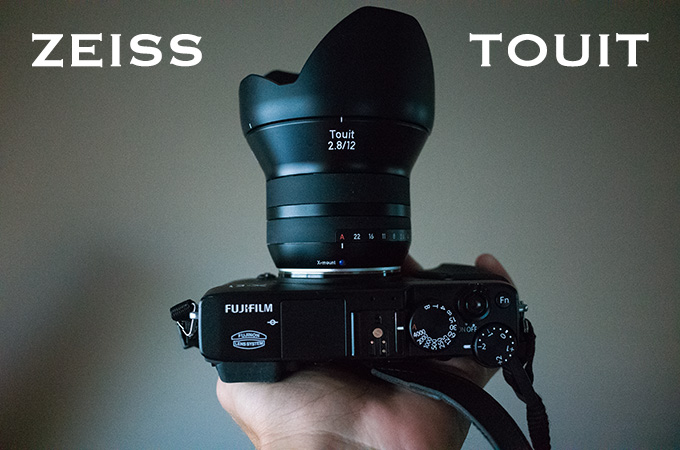
My look at the Zeiss Touit lenses on the Fuji X-E1
Where to buy Zeiss Touit: PopFlash.com and B&H Photo
PoPflash.com even has a loaner try out program, check it out!
About a week ago Zeiss sent me their two newest lenses for the Fuji X system, which are also available for the Sony NEX camera system. The Zeiss Touit 32 1.8 and the Zeiss Touit 12 2.8. These lenses were highly welcomed to the mirrorless world of Fuji and Sony as it would be two more super high quality lenses for these two systems. With a lack of really HQ lenses for the Sony NEX these Zeiss offerings are pretty exciting to those who shoot with a NEX body. But these lenses do not come cheap. At $1250 for the ultra wide 12mm f/2.8 and $900 for the 32 f/1.8 these will set you back a pretty penny. So the question is, are they worth the cost?
[ad#Adsense Blog Sq Embed Image]
Fro the moment Zeiss announced these lenses I knew that I would want to try them as soon as they hit the shelves, as I LOVE ZEISS glass! As most of you know, these lenses are not made in Germany by Zeiss but by Cosina in Japan through a partnership with Zeiss. A video was released showing how the Zeiss Touit lenses are hand assembled and they appear that they do a very fine job of putting these lenses together.
Zeiss sent me the new 32 1.8 Touit as well as the 12mm f/2.8 Touit and I was happy to give them a try. I do not own a Fuji X body so I rented an X-E1 for a few weeks and figured I could bring these to the Palouse workshop with me to give them a real workout. But last week I took the camera and lenses out to an old “mock” mining town in Apache Junction, AZ and the sun was nasty and harsh, so I knew that this was nightmare lighting for the Fuji X cameras. One thing I notice with the Fuji X-Trans is that if you give it beautiful light it will reward you with a rich, 3 dimensional file and pleasant colors that are second to none. Feed that sensor some harsh or low light and it will give you flat dull files. Where my OM-D or Leica M would give me good results in almost any light, the one beef I have with the Fuji X-Trans is the flat output most of the time, if you are not in “just right” light.
But maybe that was just a lens thing? Maybe I am just spoiled by Leica lenses and the full frame sensor. Maybe I needed some Zeiss flavor pumped into that little Fuji. I can tell you that after taking the X-E1 to the Palouse with the Zeiss 12mm, the images I am seeing from the combo are very nice. In fact, the 12mm is my fave of the two “Touit” Lenses. But let’s talk about each one.
This review will be short and to the point.
The Zeiss Touit 35 1.8 – $900 for Fuji X or Sony NEX
IQ
Well, if you love your Fuji 35 1.4 you will also love the Zeiss Touit 32 1.8. In fact, IQ wise they are very close and in my every day real world shooting, I had a hard time seeing the difference in output between the Zeiss and when I shot the Fuji. The Zeiss focus speed is about the same as the Fuji 35 1.4 and I am not really seeing the “Zeiss Look” here with these as I do with the Zeiss ZM for Leica. I thought I would get that Zeiss pop but I am not seeing it. With the Zeiss 24 1.8 for the Sony NEX I saw rich color and sharp files with some 3D pop but here I see about the same as I was getting from the Fuji 35 1.4. So output is similar but the build and feel of the Zeiss is on another level. Oh, and THE BOKEH IS SLIGHTLY DIFFERENT and I feel I prefer the Fuji 35 1.4 in that area.
The Build
The build and feel of the Zeiss 35 1.8 is top-notch. Feels solid, looks amazing and the focus ring and aperture dial are solid and smooth. The Fuji lens to me felt like a toy..hollow and cheap-ish IN COMPARISON. The Zeiss lens feels like a pro lens and looks nice on the camera. The hood is included and while being plastic, at least they give the hood, which is designed to match the style of the lens. Zeiss went all out on the “attention to detail” thing with these lenses and the 35 1.8 at $900 may be worth it to you just for this alone.
I will leave you below with some images from the 35 1.8 Zeiss on the Fuji X-E1. My feelings on this lens is that it is a gorgeous lens that appears like it will last a lifetime. Great design, solid feel, and in use it is wonderful. AF is no faster than the Fuji 35 1.4 and IQ seems about the same (without going to shooting detailed charts) in real world use so the question is..do you want the Zeiss name and build? Also, the Bokeh from the Fuji may be a little more pleasing. So, is it worth the extra few hundred dollars to spring for this Zeiss just for the build? Only you can answer that one.
As you can see below, some nice window light on your subject and it can look superb. The shot of my dog below is an OOC JPEG shot with the X-E1 and Zeiss 32 1.8 Touit Lens. My little rescue dog was sad the day I had to put my older dog Scrubby down. You can see it in her eyes right here, as if she knew.
So away I went to give these lenses a try out at Goldfield Ghost Town. It was 109 degrees and Debby and I were walking around sweating after three steps out of the car..yea, it’s a “dry heat”. Whatever 🙂 As we approached the “town” the 1st building you come up on is the Mercantile where you can buy drinks, fudge or touristy gifts. The image below was taken with the 32 1.8 at f/5.6. I use Adobe Camera Raw with Photoshop 6 for all images on this site. It seems camera RAW still has issues processing X-Trans RAW files. When I view a shot at 100% I do not get that crisp look I get from other cameras. Instead I get the odd smearing going on in fine details.
Here we can see how good the lens will do in low light. This was shot inside of the old saloon where they have boots hanging from the ceiling. At 1.8 the lens rendered nicely.
Against a wooden wall I shot this one and then converted to B&W using Alien Skin Exposure
Wide open at 1.8 – looks good
–
The Palouse with the 32 1.8
I then brought this lens with the X-E1 to the Palouse Road Trip, which was a rip roaring success! Everyone had a great time and walked away with some breathtaking shots. The Fuji did well here, as you can see.
Walking around downtown Palouse
So bottom line: The Zeiss Touit 32 1.8 is a fantastic lens with superb build and a smooth pro feel. BUT, the Fuji 35 1.4 is optically just as good with slightly smoother bokeh. The Zeiss is $900 and the Fuji is $600.
The Zeiss Touit 12mm f/2.8 – $1250 for Fuji X or Sony NEX
Where to buy Zeiss Touit: PopFlash.com and B&H Photo
This is cool as it is a ultrawide lens for your Sony or Fuji cameras, and at 12mm you will walk away with an 18mm equivalent, which is WIDE! I loved the Zeiss 12mm as it gave me a field of view I was not used to and for me it was a challenge to fill that frame with anything interesting! As I shot it more, I grew to really enjoy it and if I were to invest in Fuji in the future I would buy this lens without question. Below are some images from the lens and the Fuji X-E1:
Ahhh! The 12mm! It gives us an 18mm field of view and I grabbed a shot from the steps of the building looking up. At 12mm (18mm) you get a VERY wide-angle. The Zeiss 12mm is a fine lens.
Yes you will see some distortion but this is a 12mm lens. Another 12mm lens I love is the Olympus 12mm which is an f/2 lens and TINY. DO I prefer the Zeiss to the Olympus? Well, I feel the Zeiss is the better lens though the Olympus is a much more manageable size.
Some Alien Skin Exposure on this one…
The Palouse with the 12mm
I also brought this lens to the Palouse and used it 95% of the time when I pulled out the Fuji. I feel it did fantastic and added the drama I was looking for. All images below were shot with the 12mm, EXIF is embedded in all images. One thing I can say is that the Zeiss 12mm is SHARP.
So there ya go, my quick thoughts on the Zeiss Touit lenses for the Fuji X Mount. I like both but really fell more for the 12mm. At $1250 though it is not cheap. Another 12mm lens I enjoy is the Olympus 12mm for Micro 4/3. Much smaller, superb performance and comes in at $799 but that is for Micro 4/3, not an APS-C Fuji 🙂 Overall the Zeiss lenses provide top quality build, feel, smooth use and great performance. While they do not give me the usual Zeiss pop I have seen from Zeiss lenses on Leica or Nikon or Canon, they still give the Fuji flavor of the X-Trans sensor, which many adore.
The thing you have to ask yourself is if you want a solidly made and nice to use lens for your X or NEX and if so, the Ziess Touit lenses should be looked at closely.
Thanks for reading!
Where To Buy?
PopFlash.com and B&H Photo sells the entire line of Zeiss Touit Lenses!
HELP ME TO KEEP THIS SITE GOING AND GROWING!! IT’S EASY TO HELP OUT & I CAN USE ALL THE HELP I CAN GET!
PLEASE Remember, anytime you follow my links here and buy from B&H or AMAZON, this helps to keep my site going. If it was not for these links, there would be no way to fund this site (and the cost these days to keep it going is pretty damn high), so I thank you in advance if you visit these links. I thank you more if you make a purchase! I have nifty search bars at the upper right of each page so you easily search for something at either store! I currently spend 10-14 hours a day working on this site and the only way that I can pay for it is with your help, so thank you! Currently my traffic has been increasing but my funds to pay for the site has been decreasing, so any help would be GREATLY appreciated!
Even if you buy baby food, napkins or toothpicks at Amazon it helps this site, and you do not pay anything extra by using the links here. Again, you pay nothing extra by using my links, it is just a way to help support this site, so again, I thank you in advance ![]() More info is here on how you can help! If you enjoyed this article/review, feel free to leave a comment at the bottom of this page and also be sure to join me on twitter, my facebook fan page and now GOOGLE +
More info is here on how you can help! If you enjoyed this article/review, feel free to leave a comment at the bottom of this page and also be sure to join me on twitter, my facebook fan page and now GOOGLE +
You can also visit the new forums which also are home to the buy and sell board, so check them out!

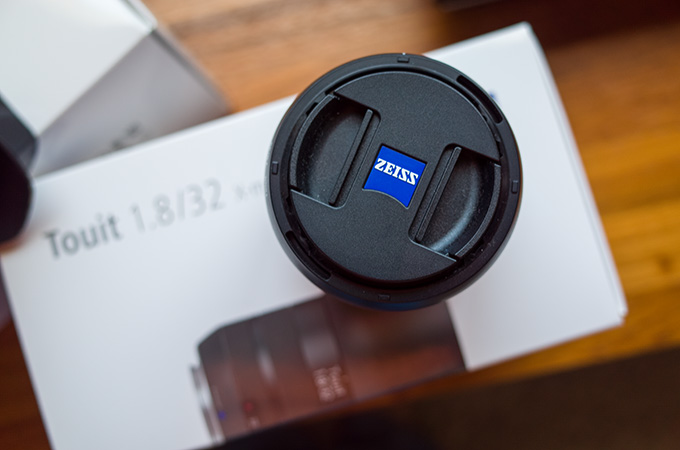
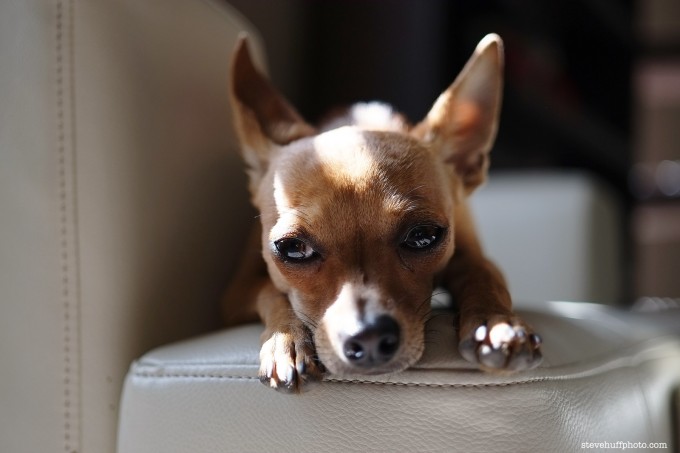
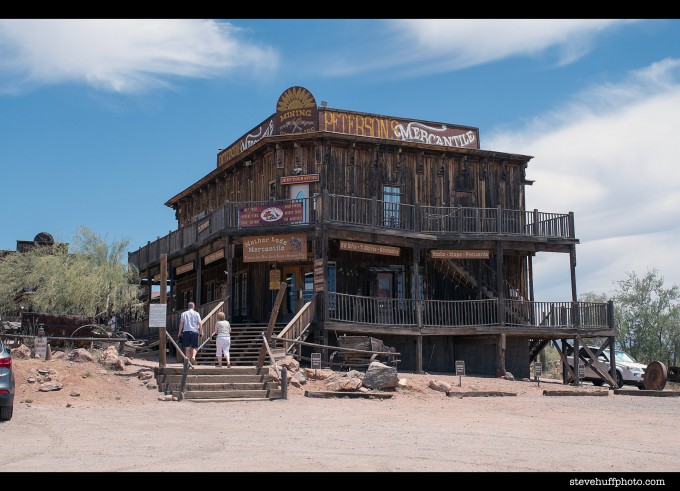
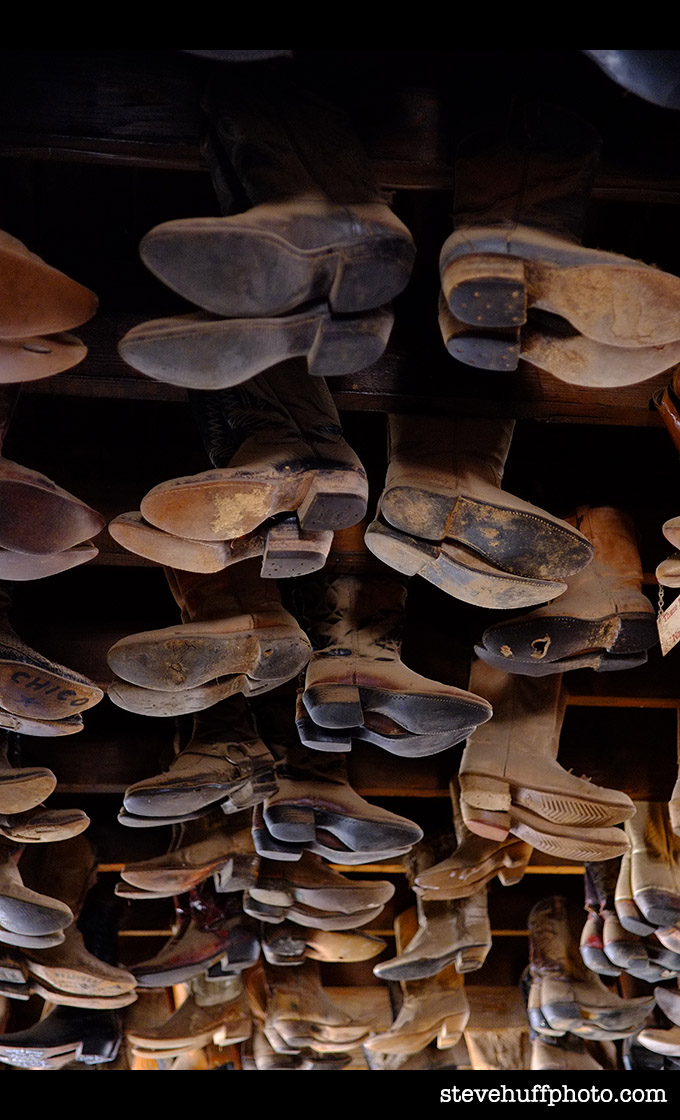
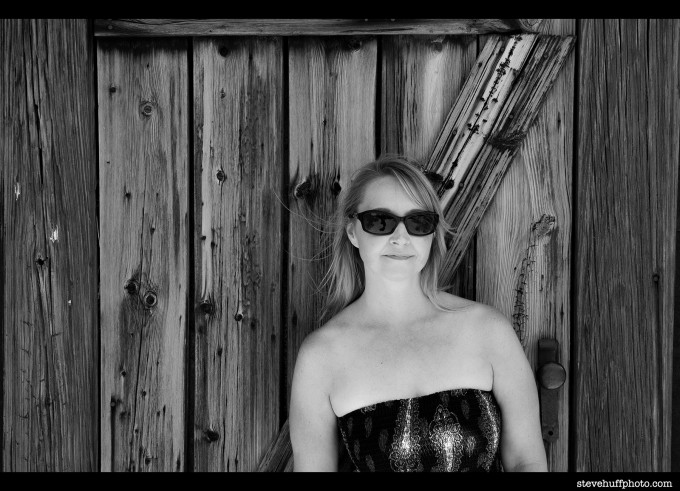
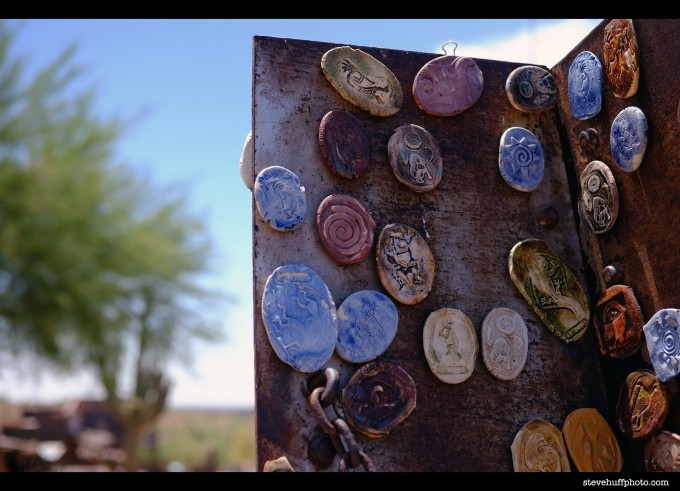
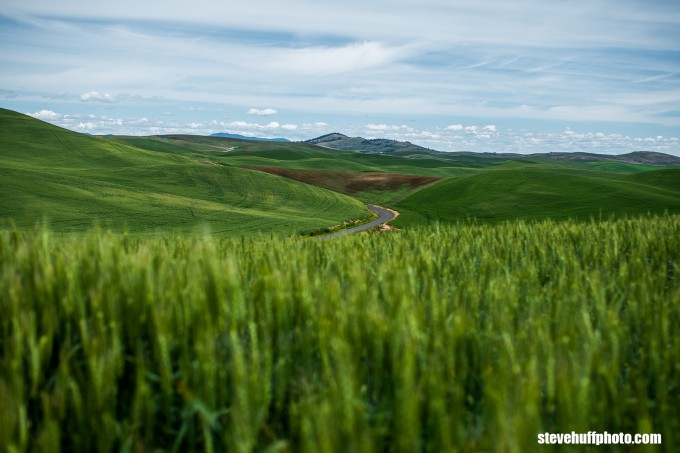
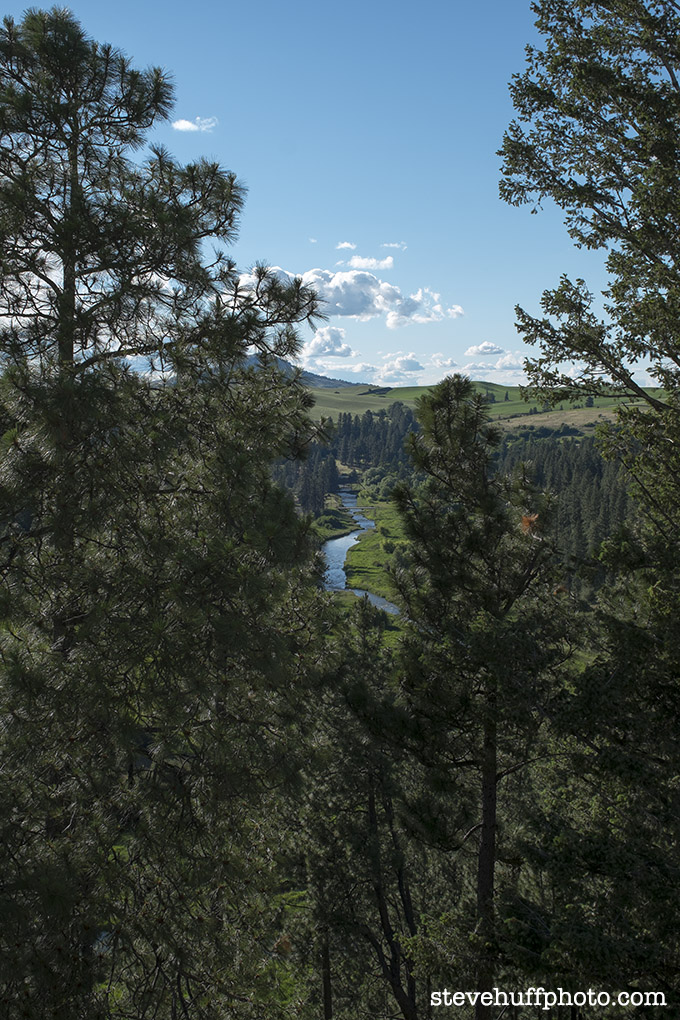

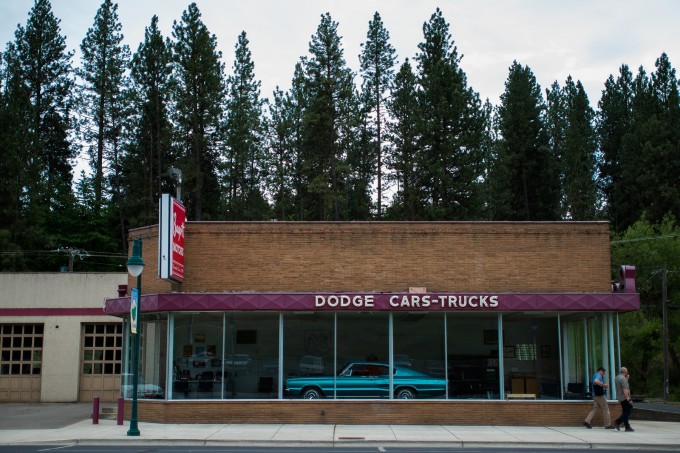
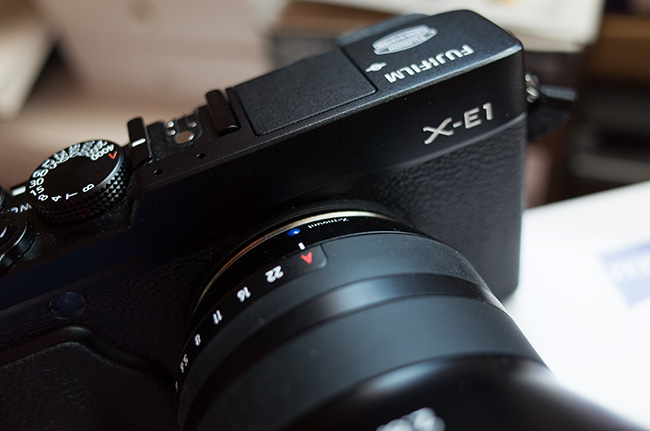
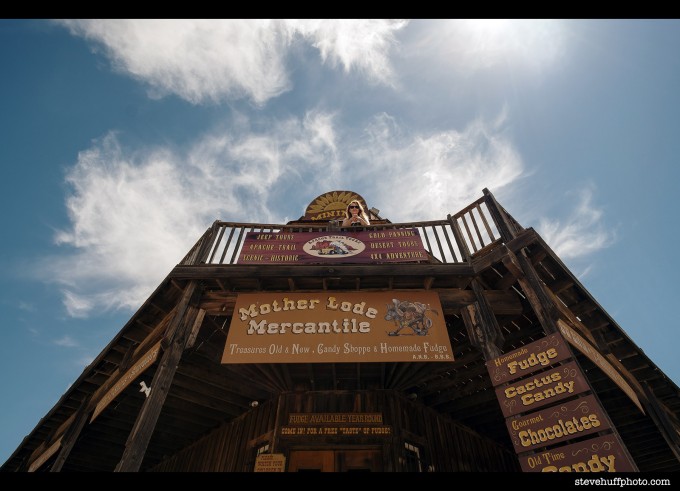
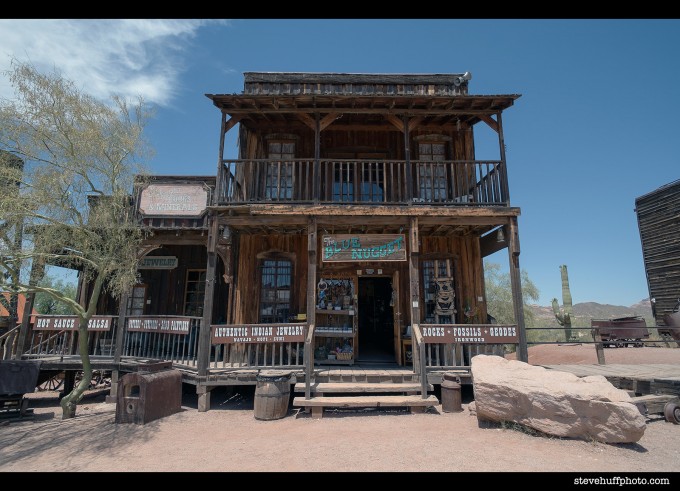
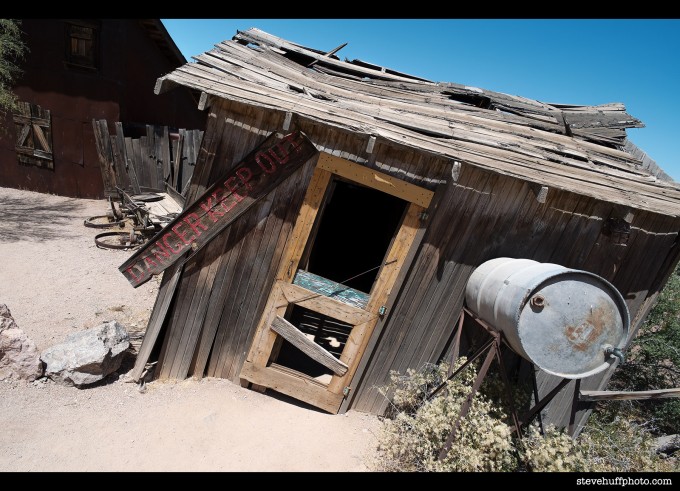
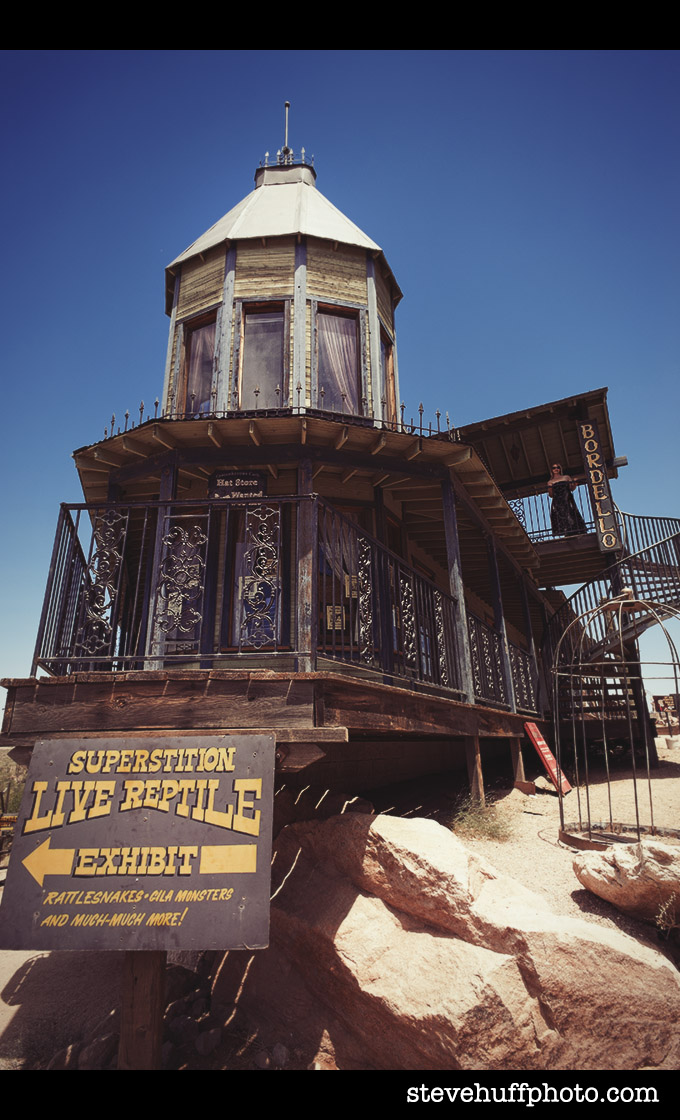
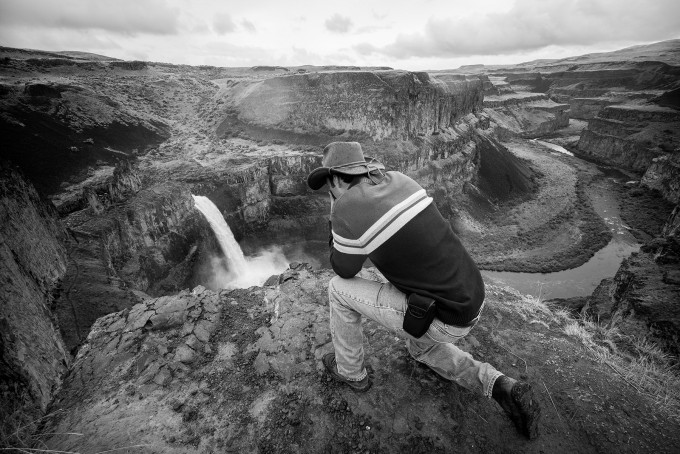
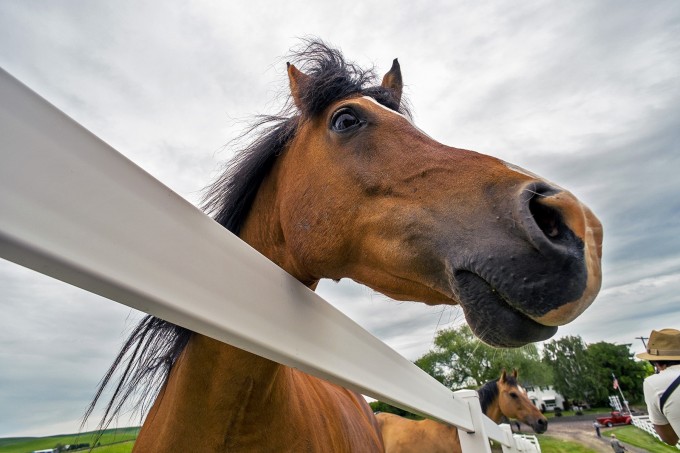
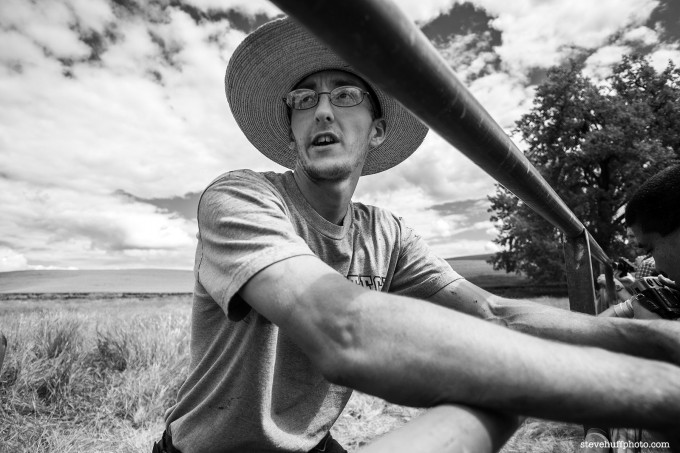
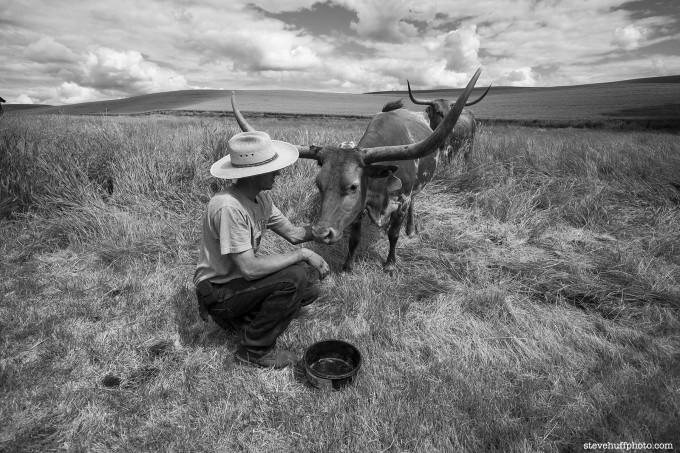
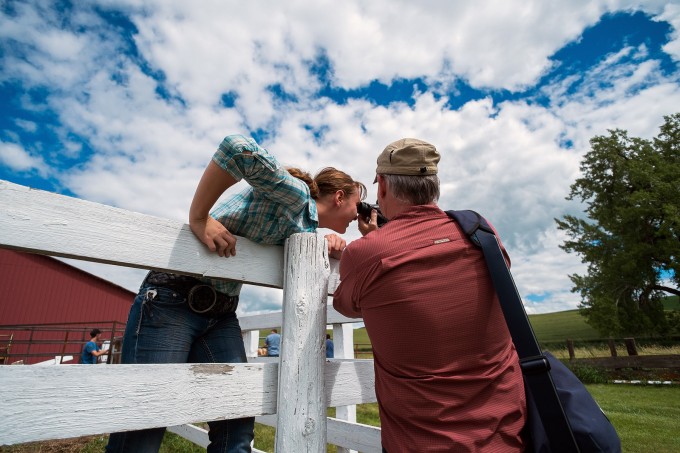
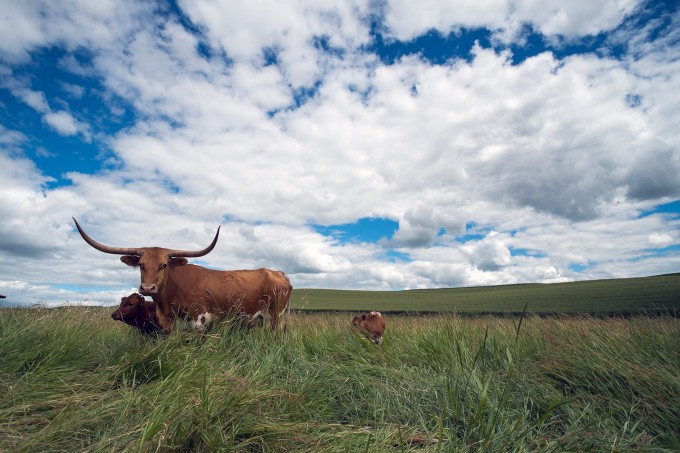
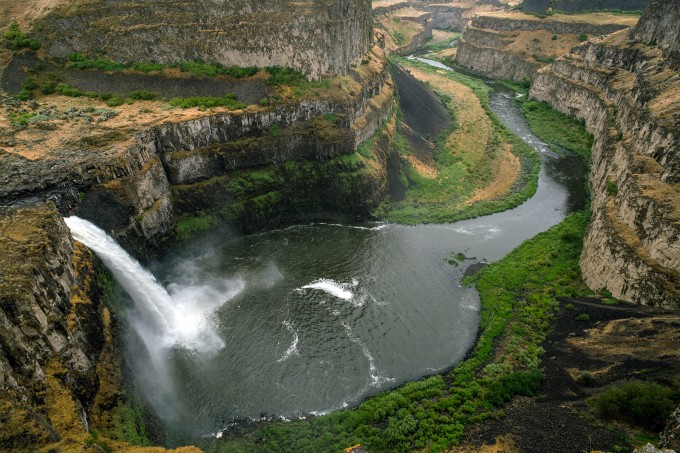

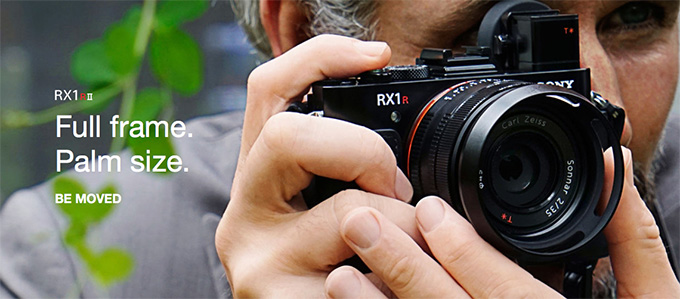

Hi Steve, haven’t saw in your post to talk about the fuji x-m1. What do you think of this camera?
I think it is an X-E1 without an EVF. Nothing major.
All debate about IQ is obsolete when you use the wrong RAW converter. Adobe just dont do it.
With the right converter IQ is on another level and you certainly see the differences much clearer. i dont want to advertise a product here though.
Please do advertise. Which product should I use for better converters? Adobe Lightroom seems quite decent these days. Did you mean C1?
You mention that the Zeiss lenses do not have the Zeiss pop you were looking for.
Is that the lens or the camera/sensor?
I would like to see a comparison of both Touit lenses comparing a Nex 7 or 6 to the same focal length Touit mounted on the Fuji.
that’s exactly what i would love to see.
Thanks for the review Steve! That Zeiss 12mm looks fantastic. It looks like it would have been perfect for my trip to the Grand Canyon last year with my old NEX 7. One item to note – I’ve been using the Fuji XE1 since it came out, and I’ve found that it does tend to over expose just a smidge, and when overexposed, the files do look really flat like you’ve mentioned. Moving exposure compensation down -1/3 or -2/3 even can be a lifesaver.
Sorry. Zeiss? really? I think Fuji 14mm and the 35 just walk over Zeiss.
I’m sorry, but that’s a really easy thing to say unless you’ve had both of these lenses on the front of your camera along with their Fuji “counterparts”
Those images look anything but flat, i find the fuji x shoots in low or harsh light brilliantly, it’s simply a matter of getting the settings right and using the most appropriate film sim for what you are wanting out of the image.
With the recent firmware updates the focusing has improved quite a bit, it’s easily the best aps-c sensor on the market in an all round fashion.
Turn long exposure noise reduction off and set nr to -1 or -2 and they are very crisp with a lot of pop and iq, unbeatable value for the money,
some even look better than the x vario unfortunately.
I put my xe1 through hideous lighting conditions from blazing sun to almost pitch black and are getting superb results consistently. Maybe it’s just hard for people to believe that a camera under 1200$ can produce such neat results? This is just my opinion.
+1
I have to say it’s a very capable camera, but does best when shot RAW. I find this to give the photos that last little bit of pop and sharpness that is sometimes missing from jpegs, especially when shooting landscapes or other things with lots of fine detail. That said, the jpegs are amazing with respect to most things, especially the gentle transition into the highlights. Seriously. Looks very filmic.
I actually bit the bullet and picked up the Zeiss 32mm and let go of my Fuji 35mm. My reasoning was that I liked the look of the images I had seen coming out of it vs the look of the Fuji. I previously shot the Fuji 35mm more than any other lens on my Fuji X camera so I’m pretty familiar with its sharpness and rendering. I find that @ 1.8 the Zeiss is a little sharper than the Fuij, but only by a little bit so and depending on your preference the Fuji may have better bokeh. It seems like there is a little more punch to the contrast on the Zeiss 32 as well. I haven’t quite had a chance to put it through the paces in the same way my Fuji 35mm had been put to the test so I can’t say I’m as familiar with its faults as I am with the Fuji.
I kind of find the lens does have a bit of that Zeiss character and look, but sensor size certainly plays a role in it lacking that full blown Zeiss pop. I am really pleased with the touit 32mm and with Fuji’s imminent focus peaking update I am seriously considering picking up the Zeiss ZM 50mm f/2.
The ZM 50mm Planar is a fantastic lens. I highly recommend it – it has tons of Zeiss pop wide open, and it’s sharp as a razor stopped down. I don’t think I have anything lying around that I shot wide open but here’s a few photos I took at a concert with a NEX and the Zeiss 50. Most were taken around f/2.8 to f/4. http://500px.com/JaredJohnson/sets/muse
The CZ 12mm looks like a fine lens. The Fuji 14mm is in the same ballpark. For me the 14mm is a little wide. I shoot a lot of people and as you can see in your photos the 12mm is a bite to wide for my tastes. I was hoping the the 32mm would have been better. Thanks for the review.
Testing .Yes that is the problem when you add a link from here, a picture link from the review for example the error 403 appears . but an external link is fine
http://www.metacritic.com/movie/man-of-steel
I think i have the answer Steve . 403 Permission Denied ? made a comment in the leica x vario review but when i added a link the error 403 appeared . Without link was normal
Hi Steve, I’ve subscribed to your site for a long time.
1. “One thing I notice with the Fuji X-Trans is that if you give it beautiful light it will reward you with a rich, 3 dimensional file and pleasant colors that are second to none. Feed that sensor some harsh or low light and it will give you flat dull files. Where my OM-D or Leica M would give me good results in almost any light, the one beef I have with the Fuji X-Trans is the flat output most of the time, if you are not in “just right” light.”
How would you describe the NEX7 in terms of light?
2. If you didn’t care about focal length, which lens results in better images, the Zeiss 32 f1.8 or the Sony/Zeiss 24mm f1.8? I would appreciate any comments comparing the 24 & 32 that you have.
A comparsion of Zeiss 24 on Sony NEX to Zeiss Touit 32 on Fuji X would not tell you the difference between the two Zeiss lenses, because the two sensors have too much own “character”.
The comparison would only make sense, by testing both lenses on the same body, which is Sony NEX in this case.
Too bad, that Zeiss sent Steve the Fuji X-Mount versions only. 🙁
The Fuji shots look substantially better than the ones from the Leica X Vario. Why don’t you do a comparison from your Palouse trip?
Nice review, its a shame all the other lenses being made are close to the fuji lenses out now. Would love to see a nice 35mm equiv. Have you tried the SLR magic 23 ? Wish fuji would bring their 23 and 56 lenses out soon.
the only lens in Fuji X I am looking forward is the 56/1.2. Also it would be nice if they could come up with something similar to Olympus 75/1.8, but it is not even on the map
Maybe the problem is just in that review
Odd, have had a few people tell me this in the last two days and am trying to find the problem.
Hi Steve i have tried to make a comment in the review of the leica x vario and i have this message
403 Permission Denied
You do not have permission for this request /wp-comments-post.php
i’ve found this link, where the Touits are compared with the Fujis . Unfortunately the zeiss lenses need software correction, while the ones from Fuji do not.
Link: http://www.fujirumors.com/zeiss-touit-vs-fujinon-xf/
“Neither the XF35mmF1.4 R nor the XF14mmF2.8 R apply any digital distortion correction, as these lenses are optically corrected. With the Touits, it’s a different story: Both the 2.8/12 and the 1.8/32 rely on digital correction and embed the lens correction profiles in the metadata of the RAW files.”
The reason for this is that the Touits were DESIGNED for the Sony NEX system, and ADAPTED by Zeiss to work with the X-System cameras.
It makes sense for Zeiss to spread the lenses over two platforms to recoup their R&D, but the Touits were fully intended for Sony first…with Fuji as the secondary market.
Hmm, didn’t,know that, but, still, both systems have the same sensor size (plus the NX from Samsung) and the sensor-mount distance is very close (17.7mm for Fuji-X and 18mm for Sony-E, the Samsung-NX is larger, about 25.50mm!) http://en.wikipedia.org/wiki/Flange_focal_distance
Kudos to Zeiss for sending lenses to be reviewed unlike other companies 😉
I used both the 14mm Fujinon and the 12mm Zeiss and I found the 14mm to be a bit better than the 12. I beg to differ that the Zeiss has a better build. Just because it is a Zeiss, it does not mean it will be better. the 14 AF is snappy and that alone can trump everything else.
Sometimes, I hate when people compare and OM-D to an X body. They are different beasts, with different pros and cons. I totally not agree that the Fujis produce flat, dull images in low light and less than ideal light. In fact, the Fujis are far better in low light and has significantly less noise than an equivalent m43. Take for example, http://www.flickr.com/photos/ap_works/8498765123/in/set-72157632836569958 (just normal recessed lights at home) or, http://www.flickr.com/photos/ap_works/9143330005/in/set-72157634326611414 (bright afternoon light in Napa valley sunshine)
I used both the OM-D and the X Pro 1 and as I could not keep both as much as I would loved to, I decided to keep the XP1. Now with the upcoming 3.0 firmware with focus peaking, it just got a new life – waiting to use all my legacy Nikkor, Pentax and Minolta glasses
+1
Zeiss looks nice, Fuji is the same. I have the 14 F2.8 and think it is a great lens.
Good pics, fine examples of the Fujion 14 F2.8.
I agree – the X-Pro 1 produces beautiful images. It is really pointless to compare the image quality of X-Series cameras to others using Adobe Camera Raw, as it does a poor job. I use Capture One for the conversion and Photoshop for editing, and I have no complaints. And, the colour accuracy of the X-Pro 1 is exceptional. While I don’t own one, one of my contacts has an M240, and he claims the colour accuracy is terrible, so who knows. If you sell a camera for $6 or $7k, it better be exceptional and better than cameras selling for far less…I have no idea – perhaps the M240 is a great camera, but it better be for that price…
Hi Steve
Liked your review on these lens, another guy also likes the Zeiss Touit 35mm F1.8 here :-
http://sgoldswoblog.com/2013/06/20/tou-be-or-not-tou-be-carl-zeiss-touit-32mm-f1-8/
I can’t handle the look of that lens with hood. Looks odd
That The Zeiss Touit 12mm looks fantastic
Steve, I believe that your assessment of the both Zeiss lenses (in particular the lack of the ‘pop’) will probably trouble many who were hoping to get more ‘push’ 😉
It makes me wonder though whether the particular design of the sensor has something to do with it. Is there any chance for you to get your hands on some NEX and the NEX versions of these lenses? It would make for an interesting comparison as it could allow to learn how does the sensor impacts the final image …
Wham bam – great “review short” Steve
Will you be tempted to get a 9mm m43 lens now you’ve tried the Zeiss 12mm? ie 18mm FF equiv.
And is there a good 9mm lens available for the m43 system?
Tomorrow is the last day of the Fuji superdeal. I am desperately in need of a summer travel camera and would have preferred the X100S, but it looks like they won’t be available to summer is over. I cannot for the life of me figure out if the X-PRO1 (which I prefer over the X-E1 because of the optical viewfinder) is the way to go or not. I’ve read so many opinions, positive and negative, on the x-trans sensor…why can’t anyone else make a small aps-c interchangeable camera. Seems like a natural fit for Pentax with their limited lenses, but they continue to hold on to the SLR form factor. I had high hopes for the Leica Vario, but alas, the slow lens is just too impractical. That leaves the Sony NEX. The NEX is one of those cameras that I put in my hand and have to work too hard to find my way through all the menus.
The NEX is less “mechanical”, in terms of controls, than the Fuji (and this, together with the retro look, is what I envy of the Fuji X platform).
Anyway, I found the NEX to be extremely ergonomic in terms of handling and the menu, once you customize the bottons and start using the touchscreen, gets easier than what you’d believe.
X-Pro1. It enables a world of magnificent Fujinon glass. Or the Touit’s we see in this review. With the X100s you have only one fixed lens… If you’re not in a hurry, wait for the X-Pro2, maybe half a year away from now – I expect it to beat anything of the same size on the mirrorless market…
The X-Pro 2 will be another game changer.
But remember, too, that Fuji just announced a major firmware update for the XP-1 and X-E1 in July that promises to significantly improve autofocus, AND that will add focus-peaking…one of the most requested features for these cameras.
Personally, I think the X-Trans sensor is amazing. It punches well above its weight class into full-frame, something no other APS-C or smaller sensor can do.
@Robert Falconer – the X-Trans punches into which FX sensor class are you referring? I know you can’t possibly be referring to the one in the Sony RX1 (Nikon D600/800) or the Leica M Type 240. Nobody that has ever seen or processed pictures from these cameras could possibly think the X-Trans is in the same “weight class.” And although the X-Trans has better high ISO than the CCD in the M9, it is not even in the same league as the M9 CCD in terms of the color and pop of the images in good light. If I had to say anything about the X-Trans sensor is that it’s that M4/3 (OM-D) punches squarely into its APS-C “weight class.”
Disagree. But it’s very important to execute ANY comparison with the right software. LR is not the best choice for X-trans, Aperture delivers pictures of which colors, sharpness and 3D feeling are in a completely different league. Adobe is not doing a good job for the X-trans, not even in the latest version.
… I have only one advice: Take your .RAF into Capture One Pro 7 ….
No, although I love C1 it is truly in this case NOT better than Aperture. Aperture is sharper, colors are richer. But again, C1 is a marvelous software for many other reasons.
Hi LCNA,
“sharper, richer colors” is a question of settings and adjustments. I am talking about the RAW-file conversion engine (and therefore the algorithms doing all that). The color-rendering, detail-recovery in low-key areas etc. … This is what defines the quality of a RAW-converter. This is independent from the final look you can create for your processed file. As usual, many mothers have lovely daughters .. 🙂
I used to have an X-E1 but I was disappointed only with the AF speed. So, I moved on to an OM-D. Used it for 2-3 months and I was utterly disappointed. It does not even come within a mile of what the X-E1 delivered in terms of punch and High ISO noise. I really do not understand the hype behind this OM-D. It’s a great camera no doubt but it is altogether a different animal than an X Pro 1 just like X Pro 1 is totally a different beast than a D800 (which I also possess). OM-D sucks at low light (the amount of noise it produced equates my years old D80)
That’s odd, considering that dpreview has shown the OM-D to outperform the far more recent Canon 7D in terms of high ISO noise performance with both cameras set to standard noise reduction. And since the 7D has the bigger sensor of the two, I don’t see how the OM-D could possibly “suck” in this regard.
Also, I don’t understand how you came to be “highly disappointed” with the wealth of available sample images and reviews that should have given you an idea of what to expect from both cameras. Personally, after doing my due diligence, I’m very rarely disappointed or otherwise surprised by my online purchases.
Why the hype? Probably the AF speed, IBIS, EVF with fast refresh rate, tiltable screen, comprehensive lens line-up and other such differentiators.
I own a 5D2, OM-D and X100 and love each in about equal measures and for their own specific merits.
That is a silly comment! The Canon 7D has similar image quality to Canon Rebel series cameras, which is not impressive at all.
@DTB: I never made any claims about its image quality, I only commented on its relative high ISO noise performance.
Extrapolating from the statement I was responding to, the 7D would both “suck” and be worse than the D80 in terms of high ISO noise and I don’t believe that this is the common consensus about that camera. And even if you don’t subscribe to that, “suck” is a long way from “impressive”.
X-trans +40Mpix, sensor with organic layer, dynamics twice what you’d see with D800, a never encountered color accuracy. Sorry, but that’s where Fuji and Panasonic are working on. Put your M and certainly your X-Vario in this case back on eBay. Unfortunately, I doubt this will be for the X-Pro2 but something in my left toe is telling me that Fuji is going to come with a big surprise. That’s why they are Fuji 😉 .
LCNA – I am sure that’s what everyone is working on. If I was a betting man, which I am not, Sony and Oly stand a far better chance to getting to a revolutionary sensor … they’ve proven it since 2007 … the D3, D800/600/RX1, etc. Although it was good to see Leica isn’t far behind with the M 240. I don’t own and never will own the X-Vario. Sorry bud, but current generation, I don’t see how you could possibly consider an X-Trans image in the same league as the M 240 with Leica glass mounted – perhaps only high ISO. It doesn’t matter what s/w you use to PP.
Dang – what is this then?
http://www.fujifilm.com/news/n130611.html?utm_medium=referral
LCNA, I look forward with great anticipation for the X-Pro2 release. Did you see Ming Thein’s X Vario review?
And this is not a rumor… found this extremely interesting…!
http://www.fujifilm.com/news/n130611.html?utm_medium=referral
http://petapixel.com/2013/06/11/fuji-and-panasonics-new-organic-sensor-boasts-insane-14-6-stops-dynamic-range/
http://www.dpreview.com/news/2013/06/12/Fujifilm-and-panasonic-organic-CMOS-sensor-industry-leading-dynamic-range-and-sensitivity
If this comes true, ANY camera on the market will look like a piece of junk, including all that too expensive Leica stuff.
@LCNA – my point is that everyone else is not standing around waiting for Panasonic and Fujifilm. Guess what makes Leica so special? It’s GLASS!!! That’s why you spend $$$ on GLASS and not the bodies!!! Their glass has been around forever and I bet the next generation of sensors will still need extraordinary glass in front of them.
Back to the original point. The current generation of X-Trans goes nowhere near full frame sensors like the D800/600/RX1 and the M 240. It’s a nice sensor and has its exceptional points – I owned the Fujifilm X-Pro1 and the 35mm (and sold them) and I cannot compare the IQ of that camera with the RX1 or the M 240. So the OP’s suggestion that X-Trans is in full frame territory is untenable.
Unfortunately, a camera has become a consumable. Just like your printer. Or your shoes. How much you pay for it, it will not last in its cutting edge competencies, any longer than two or three years, not even if your Leica dealer does everything to let you believe this myth. This is an unfortunate fact, I regret to a certain extent, just like the issue that even the choice of your RAW-software HAS the same importance to excel in IQ as the glass in front of your camera. I performed a quite serious comparison between the Leica M9 and the X-Pro1 some time ago using LR, my conclusion was clear: the Leica won, no remarks. More detail. But on Aperture, big surprise, the X-Pro1 delivers for my eyes a better IQ than the M9. The glass… I was so surprised how close both manufacturers could come. Sorry, but the very little eventual premium on IQ is not worth the excessive investment cost for me. Indeed I’m not speaking about the 6K+ Leica glass. Not even the M240, with better specs than the M9. The few happy one that can afford this, can be count on one hand and in most cases it are not even photographers. There is another side of this whole Leica/Fuji discussion. To be honest I’m not even wanting to walk with 20 or 30K of camera stuff on street. And even a lot of Leica fans I know don’t want to do that anymore. So they keep their very expensive Leica stuff somewhere in a very well protected corner while they use a tiny little Pana or Sony for the daily stuff. That’s where I like my X-Pro1 again and if I can keep up more or less with the M9-IQ, that’s fine enough for me. The next X-trans will bring me better, and even with the purchase of a new, second X-Pro, I’m not at the cost of one Leica. Not even with a third one, or a fourth one. Than we’re 4 year further and your M240 will be far behind anything else on the market.
In four more years many will still be shooting M8’s, in 8 more years many will still be shooting with M9’s…a camera is good for as long as you want to use it.
Steve: how many people did you meet with a Digilux 1 or 2 recently? The Leica myth of buying a camera for the rest of your life is what it is… a myth.
D2? I know quite a few who shoots with the Digilux 2! A few who have the 3 as well. My son uses his D2h on a regular basis and I also have friends who shoot exclusively with an Epson RD1. A guy I know who shoots 3 times a week uses a Nikon…get ready for it…D100. So while I may upgrade bodies due to this site and for the purpose of reviews, and YOU may upgrade because you feel you want or need to, there are many out there shooting happily with what they bought 10 years ago. No myth 🙂 Reality. All of those cameras I mention are no where near as nice as what the M8 or M9 or M put out so I expect there will be many shooting these cameras for quite a long while.
@jeffreyLTM
from a professional review:
“This Fuji lens has the superior sharpness and lack of distortion of the LEICA SUMMICRON-M 50mm f/2, with the speed and superior bokeh of the LEICA SUMMILUX-M 50mm f/1.4 ASPH, and focuses faster, focuses closer and has less light falloff than any of them. Bravo, Fujinon!”
High praise for a lowly $600 lens (XF 35 f/1.4)
That is so UNTRUE it is laughable. Anyone, and I mean ANYONE who has shot both (different focal lengths by the way) will tell you the same. Not sure who the reviewer is but feel free to name the site you qouted from 🙂 – The Fuji lens feels like a toy in comparison, is hollow feeling and the AF is slow and rackety. The Leica lens is solid, brass, feels like it will last a lifetime and the glass used is top notch. The Bokeh from the Leica is much more pleasing and you can not, in any way, shape or form get anything from the Fuji and 35 1.4 that appears or looks like a 50 Lux on a Leica M. Period. Different rendering, different color, more organic and fluid with much nicer overall feel. By taking a qoute from someone who has no idea what they are talking about does not make it so 🙂
The Fuji is a great lens for the Fuji system but it is an APS lens, not full frame. It is very light weight in build and AF is slow. The lens is sharp but the Bokeh is not in the Lux league, at least from what I have seen. Its a 35 not a 50 so you will get 35 1.4 depth of field, not 50mm 1.4 depth of field. Totally different.
Just take a look at my Voigtlander 50 Nokton, which is a few notches below a LUX ASPH when I compared it head to head with a Fuji X-E1. That test shows a huge difference with a Voigtlander, and doesn’t look good for the Fuji.
@steve
The quoted statement did not compare build qualities so I’m not sure why you felt compelled to do so in your response, while you did not rebut the actually asserted differences (except bokeh which is a largely subjective quality) such as sharpness, lack of distortion and closest focus distance.
I don’t know who’s right, but I feel that if you want to challenge someone, you must do so based on their actual statement and not imply something to discredit them as someone “who has no idea what they are talking about”.
The favourable “professional reviewer” Fuji>Leica comparison quoted by Jason is an opinion from Ken Rockwell.
I shot both the Zeiss 32mm and the Fuji 35mm over a couple of weeks… they are both very close and like you said, the 35mm, especially at f/1.4, can offer slightly more pleasing bokeh.
They are both fantastic but beyond build quality, the Zeiss does seem to have better coating on the lens.
Unless it was something specific to my particular lens, the Fuji would show some refraction artifacts when pointing directly at a light source while the Zeiss would not. Most of the time it was almost impossible to tell the difference between the two lenses beyond the differences with flair and ghosting, etc. The lens hood on the Zeiss is larger than the Fuji hood which may explain the difference with flare.
Of course, the Zeiss is also slightly wider as well.
Steve,
I regularly read your blog since my wife bought a Sony NEX for me. I guess you might be annoyed by all the comparison requests, but, if/when doable, I have one (a little OT from your post):
Sony NEX6+SEL35 vs Fuji X-E1+XF35
I read most of the threads about Touit 32 vs SEL35 or XF35 (depending on the mount) and there is a “surprising” overlap in overall difference: in both the comparison sets, the Touit usually looked a tad sharper and crispier in color, when the “native” lenses performed better at bokeh.
All in all, the SEL35 and XF35 looked pretty similar (and outstanding performers).
Is the SEL35 a kind of “hidden jewel” of the E-mount lineup?
Thanks
I you would look for an alternative, I’m very happy with my 12mm Heliar – and honestly, you don’t need AF on a super wide! The Heliar makes your X-E1 a real pocket camera.
Hello. On what mount would use this — Leica M adapter?
Why did you not compare Fuji’s excellent 14mm with Zeiss 12mm, like you did Zeiss 32 with Fuji 35? Everyone raves about Fuji’s 14mm. I’d be curious about your opinion of whether the Zeiss 12 is worth $450 more than Fuji’s 14.
Because I do not have the 14, nor have I ever seen it or touched it. I do not have unlimited access to any lens or camera, many times I have to buy them with my own money and then resell, which means, I lose money. I am sure the Fuji 14mm is great but from what I have seen, the Zeiss build is superior, without question.
The XF14mm is definitely one of the best wide-angle lenses I’ve ever seen.
Steve, try the Fujifilm 14mm XF it is rather lovely.
” …nor have I ever seen it or touched it”
“…the Zeiss build is superior, without question.”
What am I to make of this?
You may well be correct but shouldn’t you either see or touch one before making such a statement… or perhaps reconsider the clause without question?
Even if I am sure, no “bad intention was behind” Steve’s statement, it’s very often like this. Someone is reading something about what someone else said or claimed to have seen/tested. And then another test report is out.
Above all that, a statement like “a lens has a superior quality” is a little bit like saying “this is the best restaurent in town”. A VERY personal thing. I am a pro-Photographer and I am using the gear that is helping me to get the job done. If the color-fringing is 0,7% worse in the upper right corner than in the lower left one – but only on Sunday afternoon’s – this is nothing I am really spening a second reading or thinking about. If a lenses AF can’t cope with the speed I am shooting, this is something that bothers me – just to give an example.
Cheers, and happy shooting …
Peter
Peter,
No, I don’t suspect there was any bad intention.
It just seems like a ridiculous thing to say (especially for a reviewer).
Phil, if you loan Steve a Fuji 14mm lens, he might just review it for you. Like Steve said, this is not a commercial site where he is given a lens or any other camera accessories to review. He had to cover the costs himself. So in his reply above, all he said was he cannot comment about Fuji 14mm because he has not used one. If you are happy to loan Steve a Fuji 14mm lens, readers from this blog would appreciate your generous offer.
He did comment on it, albeit indirectly, by claiming the superiority of the Zeiss.
I love the Fuji 14mm. I used Nikon 20mm on FF and Olympus 12mm (a great, small lens : I couldn’t agree more) but the Fuji is stellar, with amazingly little distortion for such a wide angle. It focuses faster than the 18mm and is also better built than the other X lenses, but the aperture ring is still fiddly. Optically, it is fantastic.
I went through about 6 copies at local camera stores looking for one with a stiffer aperture ring. There were inconsistencies across most of them but all were ok except one was very loose. I’m always accidentally changing the ap. ring on the 14mm and the exposure compensation dial on X-E1’s… It is a fantastic lens though in just about every other way.